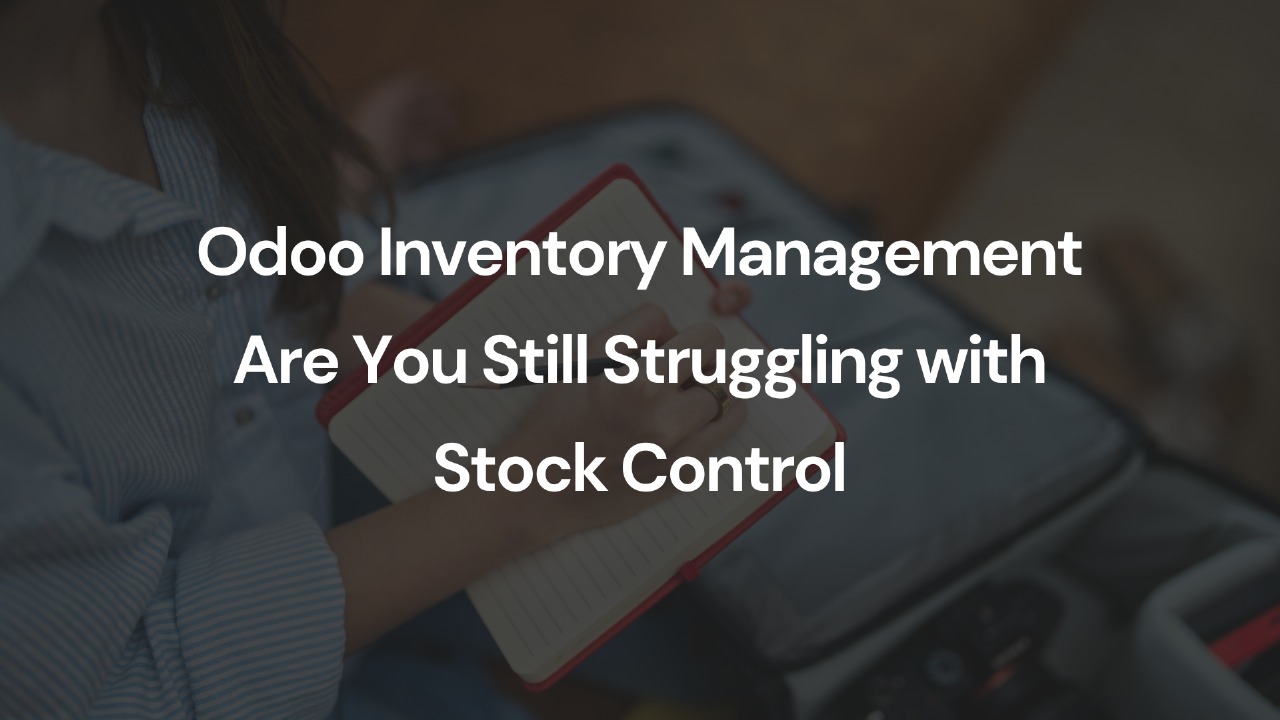
- Byte Legions
- Odoo Functional
Odoo Inventory Management: Are You Still Struggling with Stock Control?
Introduction
Managing inventory efficiently is one of the biggest challenges businesses face today. Whether you run a small retail store or a large manufacturing unit, stock mismanagement can lead to financial losses and operational inefficiencies. Are you still struggling with stock control? If so, Odoo Inventory might just be the perfect solution for you.
Understanding Inventory Management Challenges
Many businesses struggle with:
- Holding excess inventory ties up capital, while insufficient stock leads to lost sales.
- Without proper systems in place, tracking inventory across multiple locations is a nightmare.
- Delayed order fulfillment and mismanaged stock locations lead to inefficiencies.
- Spreadsheet-based tracking results in frequent miscalculations and discrepancies.
Why Choose Odoo for Inventory Management?
Odoo Inventory is a game-changer for businesses looking for an efficient stock control system.
Here’s why:
- Manages stock levels, sales, procurement, and warehouse operations in one platform.
- Works with Odoo Sales, Purchase, and Manufacturing modules.
- Suitable for both small businesses and large enterprises.
Key Features of Odoo Inventory Management
- Real-time Stock Tracking
Track inventory movements in real-time to avoid stock discrepancies.
- Barcode Scanning for Accuracy
Eliminate manual entry errors and speed up warehouse operations.
- Multi-Warehouse Management
Manage inventory across multiple locations efficiently.
- Automated Reordering Rules
Never run out of stock by setting automatic replenishment rules.
- Lot and Serial Number Tracking
Keep track of batches and serial numbers for better traceability.
- Seamless Supply Chain Integration
Sync inventory with suppliers and logistics for smooth operations.
How Odoo Inventory Improves Stock Control
- Reduces stock discrepancies with real-time tracking.
- Enhances order fulfillment efficiency by streamlining warehouse processes.
- Minimizes manual intervention with automation and barcode scanning.
Real-Life Use Cases of Odoo Inventory
- Retail businesses use it to manage stock across stores.
- Manufacturers rely on it for raw material tracking and production planning.
- E-commerce companies integrate it with online sales platforms for automated order processing.
Step-by-Step Guide to Setting Up Odoo Inventory
- Install & Configure the Odoo Inventory module.
- Add Products & Define Locations for better tracking.
- Enable Barcode Scanning to speed up warehouse operations.
- Set Reordering Rules to prevent stockouts.
- Integrate with Sales & Purchase Modules for seamless transactions.
Best Practices for Using Odoo Inventory Management
- Conduct Regular Stock Audits to prevent errors.
- Automate Procurement to maintain optimal stock levels.
- Leverage Analytics to make data-driven decisions.
Common Mistakes to Avoid in Odoo Inventory Management
- Ignoring Stock Valuation Methods can lead to incorrect financial reporting.
- Overlooking Security Controls may result in unauthorized stock movements.
- Not Utilizing Reports Effectively means missing critical insights.
- Integrating Odoo Inventory with Other Business Operations
Odoo Inventory seamlessly connects with:
- Sales & Purchase Modules for smooth transactions.
- Manufacturing & Logistics for efficient production planning.
- E-commerce Platforms for real-time stock updates.
Conclusion
If you’re still struggling with stock control, Odoo Inventory is the perfect solution to streamline your inventory management. With real-time tracking, automation, and seamless integration, it eliminates inefficiencies and boosts operational efficiency. Ready to transform your stock management process? Odoo has you covered!
Let’s connect on LinkedIn and explore opportunities together.






Comments are closed